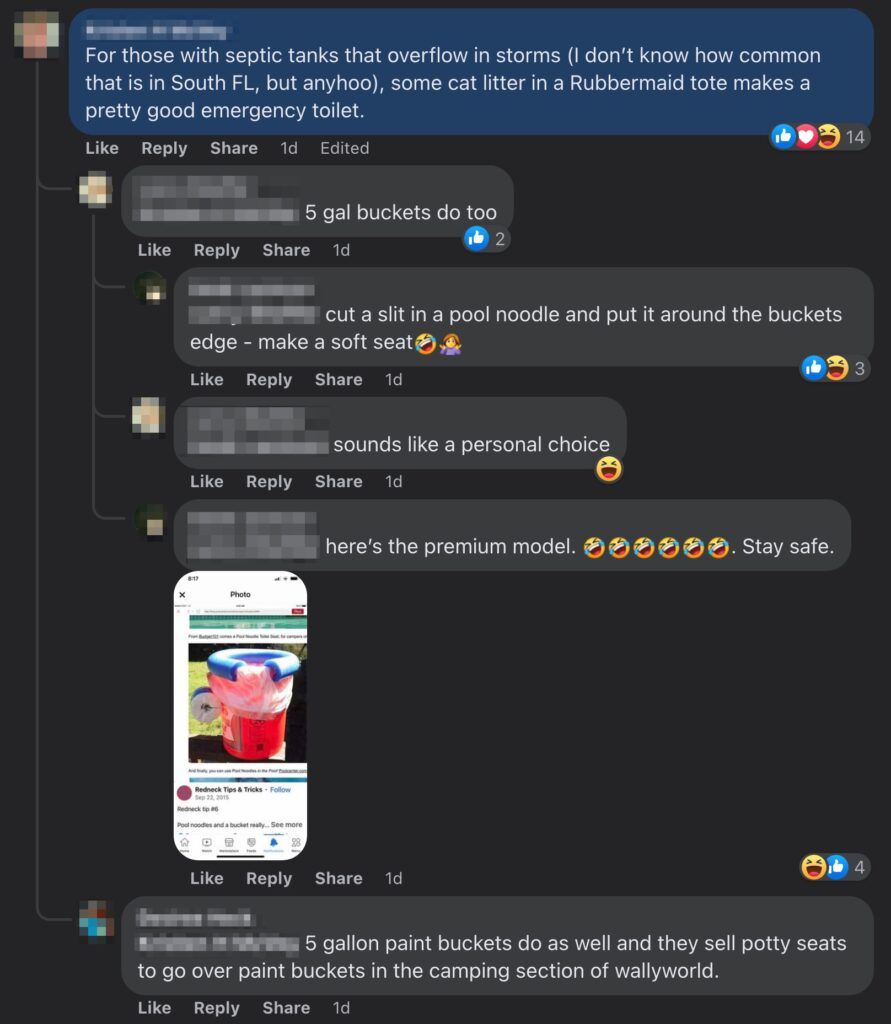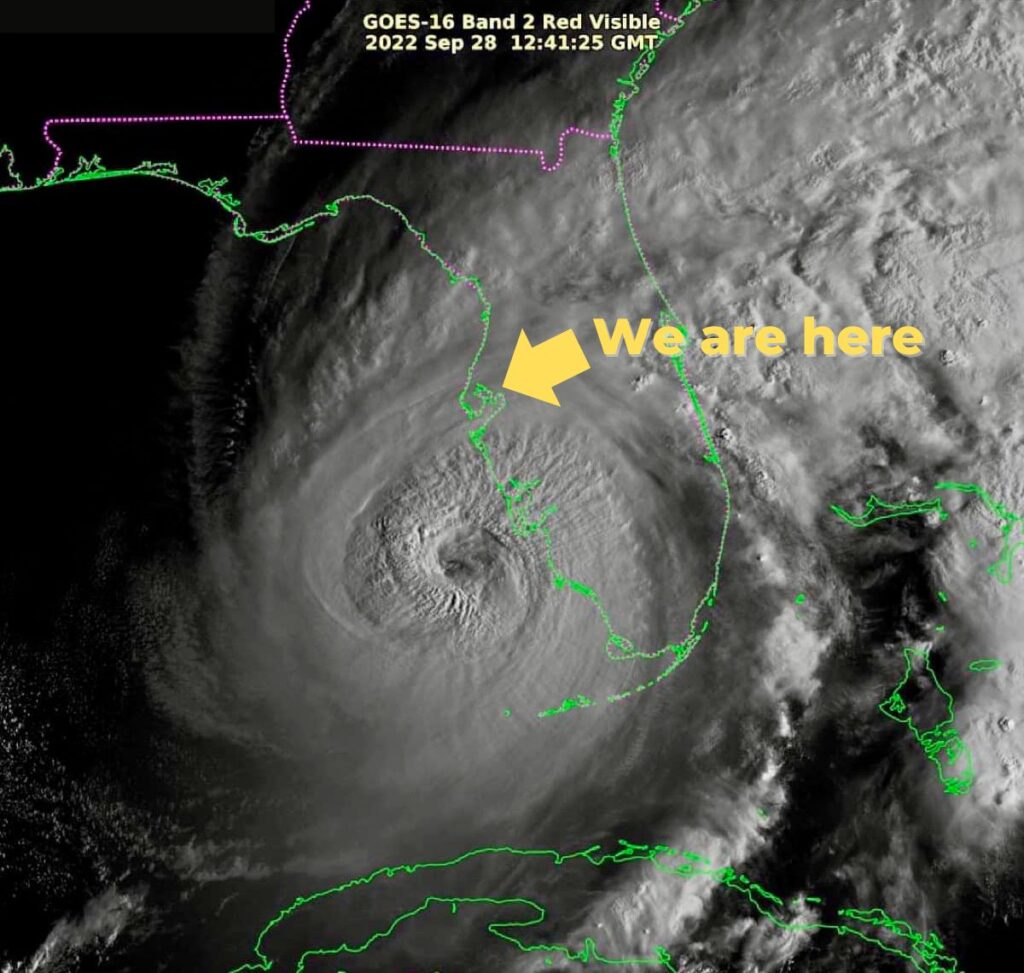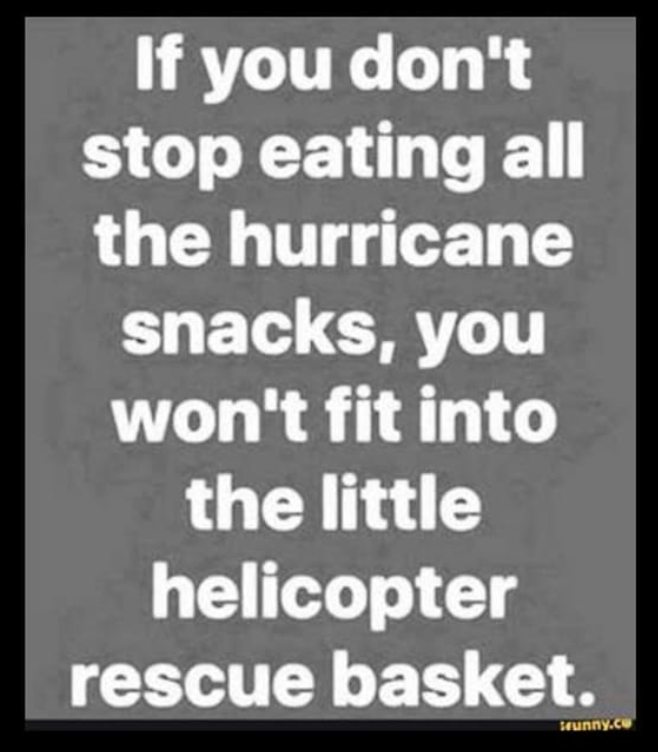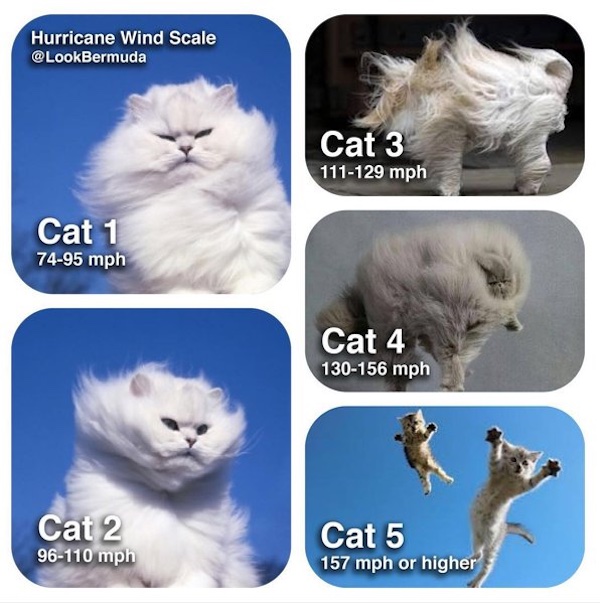
I get the feeling that some cat people entertain fantasies about being able to “go” in a box, just like their beloved fur children.
Here’s an amusing discussion on Facebook about makeshift toilets that you can improvise if Hurricane Ian disrupts the water system:

Here’s a close-up of that “pool noodle on a 5-gallon bucket” toilet. It’s impressive and a little disturbing at the same time:
 Here’s another suggestion to use a paint bucket that paints a slightly darker picture:
Here’s another suggestion to use a paint bucket that paints a slightly darker picture:
 I don’t know about you, but I’ve filled our giant wheeled trash and recycling bins with water (and a little bleach) that we can use to flush our toilets. If that fails, I’m going to make like the neighborhood cats and just poop in the yard.
I don’t know about you, but I’ve filled our giant wheeled trash and recycling bins with water (and a little bleach) that we can use to flush our toilets. If that fails, I’m going to make like the neighborhood cats and just poop in the yard.

Where we are — the Seminole Heights neighborhood in Tampa — the rain has begun to fall in earnest, and we’re now just waiting to see what happens when Hurricane Ian arrives.
We’ve deployed the hurricane kevlar…
…we always maintain a good supply of bottled water (which doubles as my CPAP water supply)…

…the pantry is always stocked…

…as is the bar…

…and while the battery stash isn’t as well-stocked as I would like…

…it should be enough.
I’ll keep you posted as the day goes, and while we have power and internet connectivity!

Okay: in the absence of ethanol-free gasoline, you can run a gasoline-powered generator with fuel that has up to 10% ethanol. But you will shorten your generator’s life, and as long as you live in Florida, you’ll need it again. Try to fill your generator with ethanol-free gasoline!
My recommendation: Try and find a gas station that sells ethanol-free gasoline. Wawa is a reliable source — use their store locator, select Advanced Search, and check the Ethanol Free checkbox and run the search!

 Hurricane Ian is bearing down on Accordion Bay! In response, we’ve deployed the latest of our anti-hurricane measures: kevlar.
Hurricane Ian is bearing down on Accordion Bay! In response, we’ve deployed the latest of our anti-hurricane measures: kevlar.
We used to have 1/2″ and 3/4″ plywood sheets with pre-drilled holes that we’d slip onto bolts sticking out of our window frames when a hurricane came. The bolts weren’t the most aesthetically-pleasing thing, and the plywood took a lot of storage space and was a real pain to set up and tear down.
After the last hurricane came through town, we’d decided that we’d had enough of the plywood approach and started looking at other hurricane-proofing solutions for the windows and went with hurricane fabric: kevlar panels with mounting brackets held in place by screws going into holes embedded in the window frame or wall. During non-hurricane times, plastic plugs go into the screw holes.
We have a panel for every window in the house, and the whole set fits in a closet. It would take me a whole afternoon (and ideally, another person to assist) to cover the windows the old plywood way; I can now do the job solo in about an hour with the panels.
Here’s a demo of hurricane fabric in action:
Unpleasant as the replacement costs would be, you consider your windows expendable in hurricane country. What you really want is something that will prevent hurricane projectiles from entering your house (and more gravely, entering you.) We’re counting on the hurricane fabric’s combination of strength and “give” to deflect whatever the cat 3 or cat 4 winds decided to hurl chez nous.
I’ll report back if anything interesting happens.

